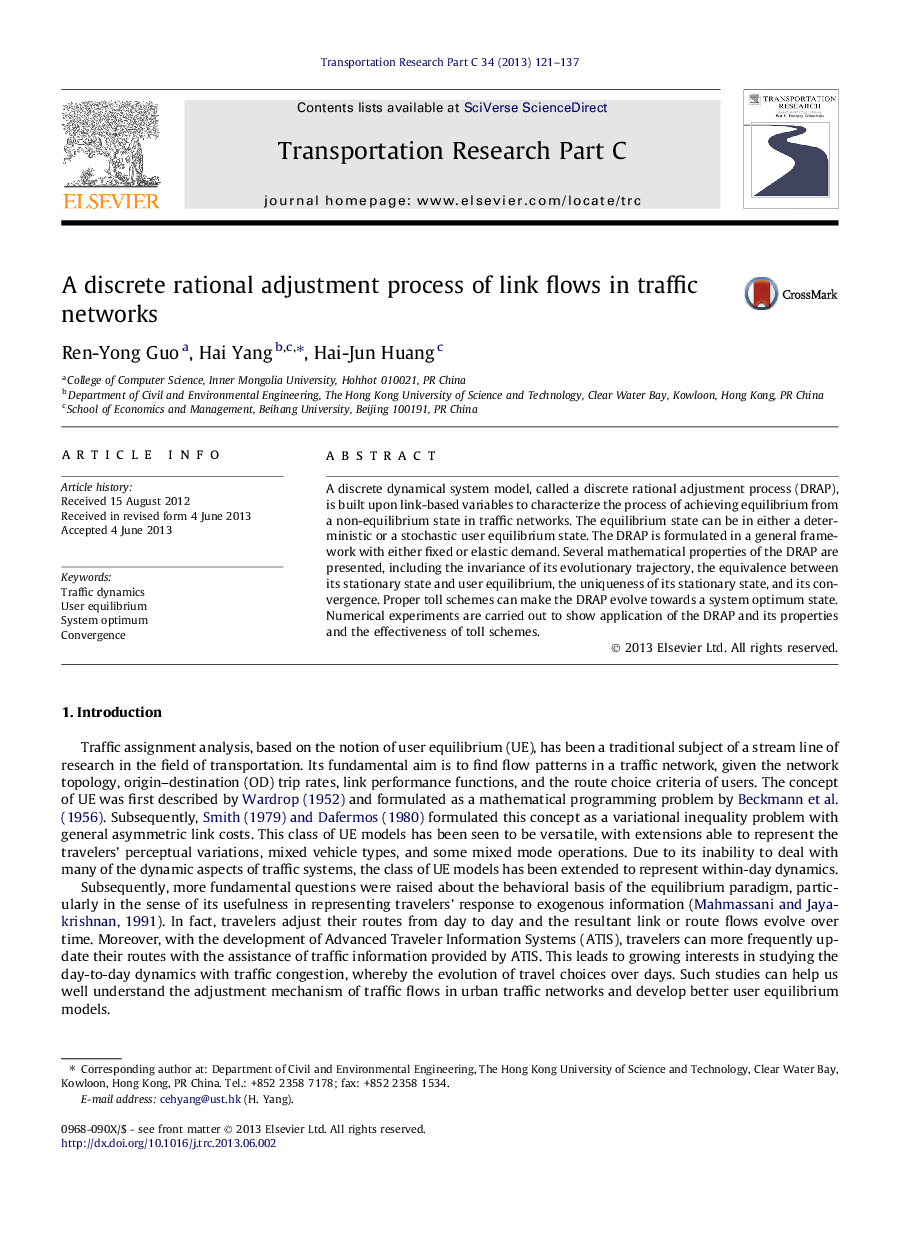| Article ID | Journal | Published Year | Pages | File Type |
|---|---|---|---|---|
| 525153 | Transportation Research Part C: Emerging Technologies | 2013 | 17 Pages |
•Develop a discrete rational adjustment process (DRAP) upon link-based variables.•Establish several desirable properties of the DRAP.•Formulate the DRAP in a network with either fixed or elastic demand.•Consider the case of either deterministic or stochastic user equilibrium.
A discrete dynamical system model, called a discrete rational adjustment process (DRAP), is built upon link-based variables to characterize the process of achieving equilibrium from a non-equilibrium state in traffic networks. The equilibrium state can be in either a deterministic or a stochastic user equilibrium state. The DRAP is formulated in a general framework with either fixed or elastic demand. Several mathematical properties of the DRAP are presented, including the invariance of its evolutionary trajectory, the equivalence between its stationary state and user equilibrium, the uniqueness of its stationary state, and its convergence. Proper toll schemes can make the DRAP evolve towards a system optimum state. Numerical experiments are carried out to show application of the DRAP and its properties and the effectiveness of toll schemes.
